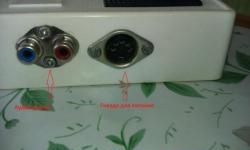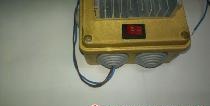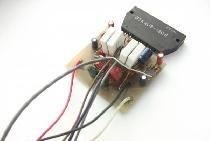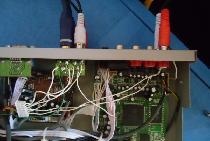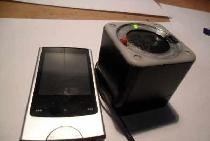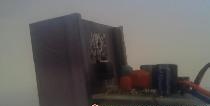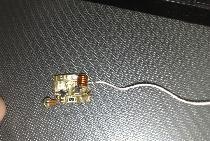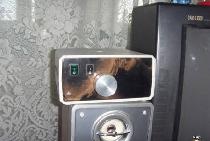Now we will pass to assembly and for a start we will familiarize with the circuit.
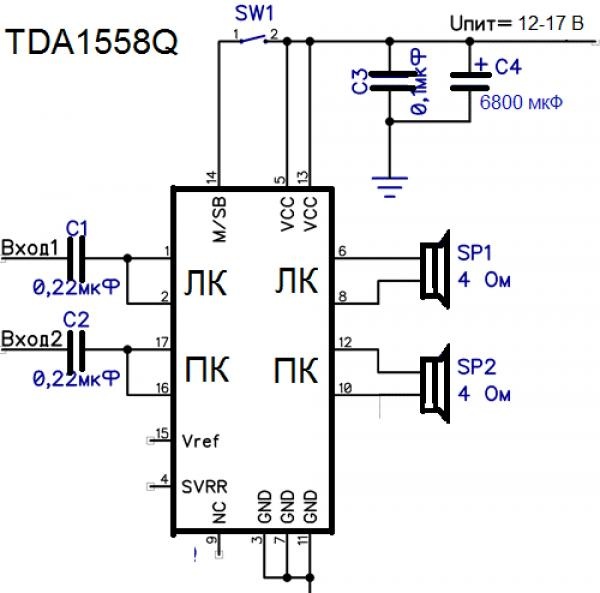
The circuit is extremely simple and can be assembled in 10-15 minutes, its simplicity makes it possible to solder it by wall mounting, it is also worth recalling that the circuit has thermal characteristics of the iron and it requires a radiator of approximately 600 cm2 in area and either an open case or forced cooling in the form of a fan.
Here is the set of parts that I needed to build the amplifier.
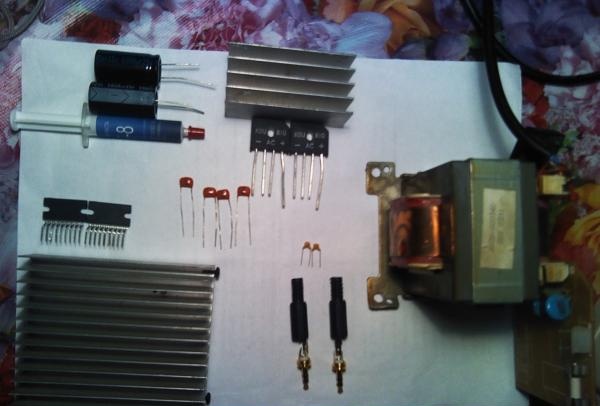
I used two diode bridges for the reason that I used a transformer with two similar windings, usually one of 8 A is quite enough
Two 3.5 plugs were separately purchased for inclusion in the computer's audio card.
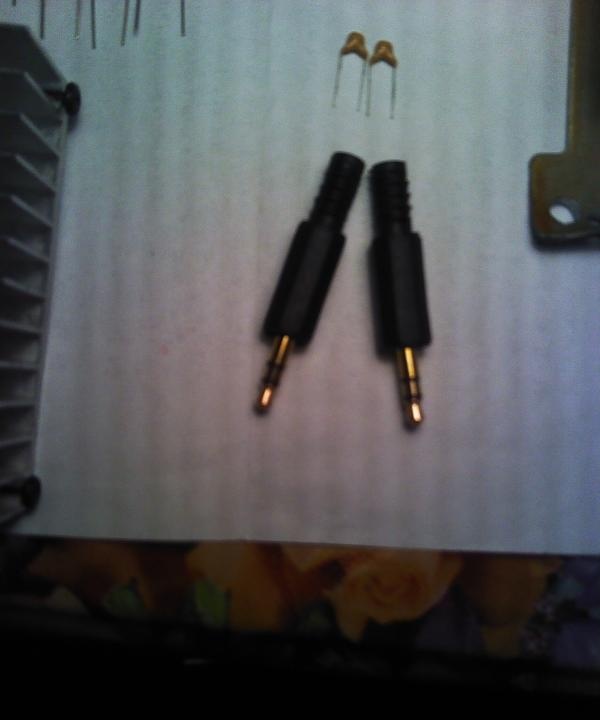
Now I think you can go actually to the assembly of the amplifier. I didn’t have a ready-made power supply unit and I had to assemble it myself, and I recommend that you do the same thing because it’s not easy to find ready-made power supplies with the necessary power reserve, since at a voltage of 17 V one microcircuit consumes about 3 A even when it is “silent”. Also, if you disconnect the 14th contact, the amplifier will go into "Sleep mode" and the current consumption will be reduced to a couple of hundred mA
And so for a start we will find a transformer of the required power, then you can solder the rectifier yourself, but I still advise you to take a ready-made diode bridge. We take and install it on a small radiator. (I didn’t have a little one)
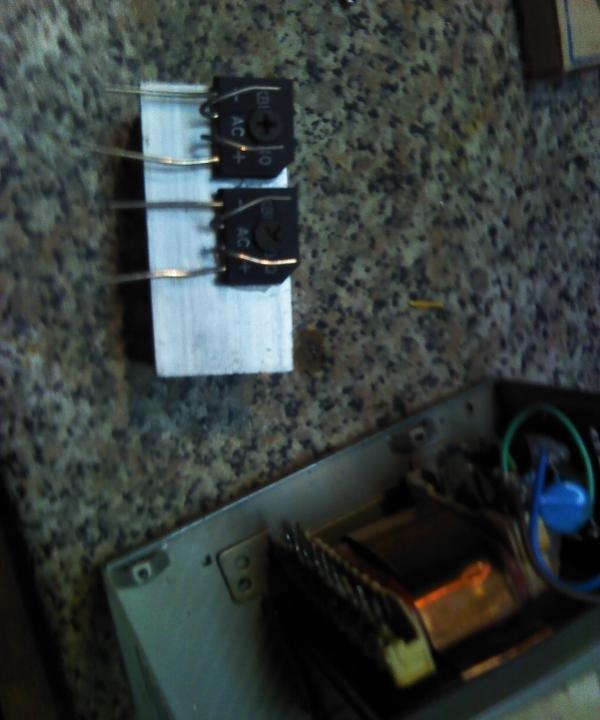
Then solder the capacitors
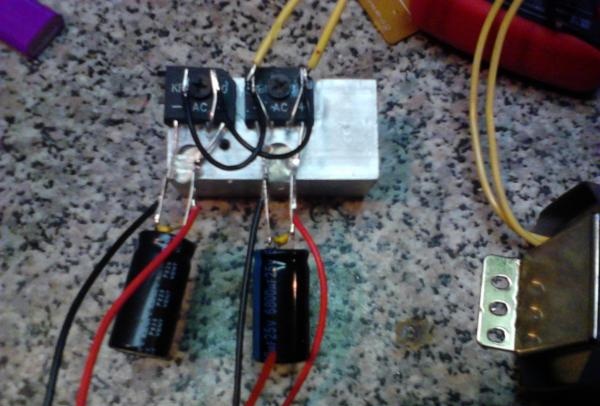
Since I also needed to install a transformer for another device, I decided to separate the PSU from the amplifier itself.
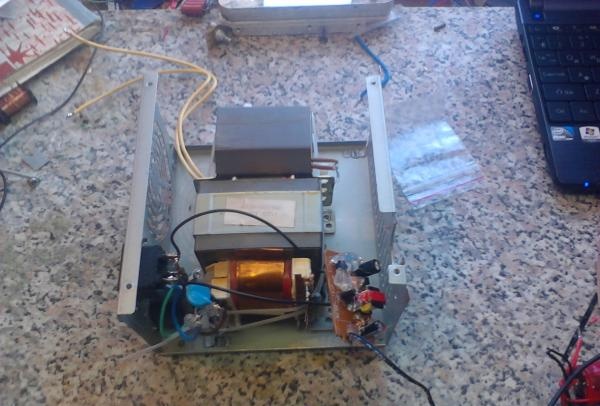
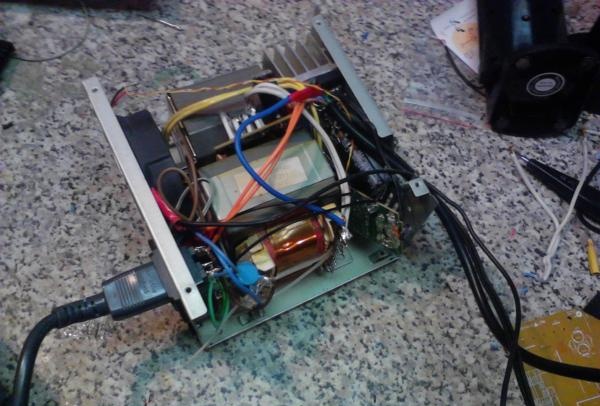
Since I used this amplifier for a home computer, I decided to “connect” the inclusion of the amplifier with the inclusion of the computer, how to do this is described in this article (Automatically turn on and off from computer) I did not go exactly the way that in the article I connected the relay to the yellow and black (12 V) wires coming from the PSU of the system unit and brought the wire out of it to the amplifier PSU. I also want to say that the higher the voltage, the better the sound at high volume but also the heating also increases, the optimal supply voltage of 15 V when the threshold is exceeded by 17 volts, the amplifier goes silent (while the voltage is exceeded), so if there is no sound, measure the voltage.
Now let's move on to assembling the amplifier itself. Since the circuit for switching on the microcircuit is primitive, it probably is simpler and cannot be, I decided to solder everything by wall mounting.
To begin, we fix the microcircuit on the radiator, it is previously recommended to smear the junction with thermal grease
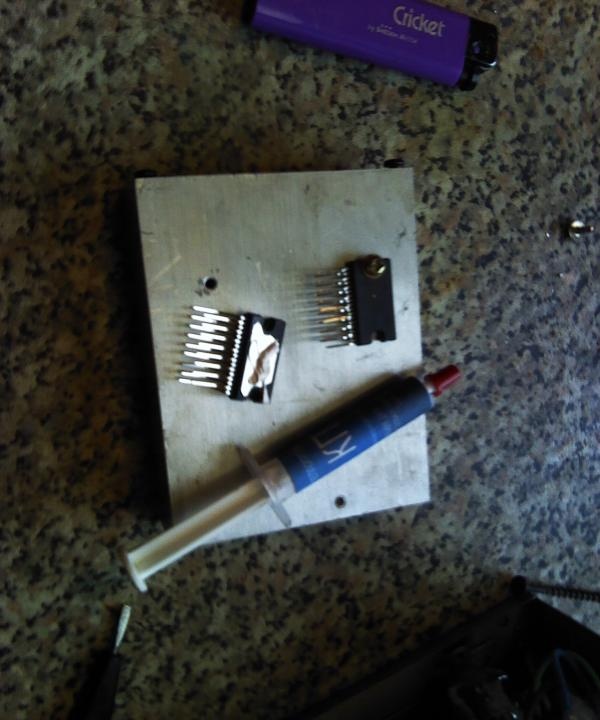
After that, looking at the circuit, we bend the necessary contacts (14, 5, 13 - Plus power.3, 7, 11 - Less power. Etc.) Extra contacts can be bitten off so that they do not interfere.
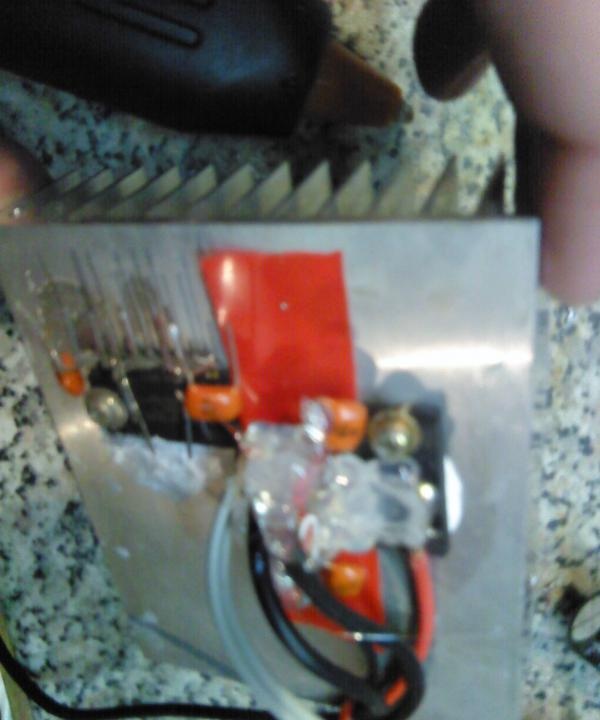
After you have soldered all the necessary wires and capacitors, it is necessary to get rid of the non-reliability of “fragility” (for surface mounting), I recommend using hot glue to carefully fill the contacts in such a way as to avoid a short circuit between them.
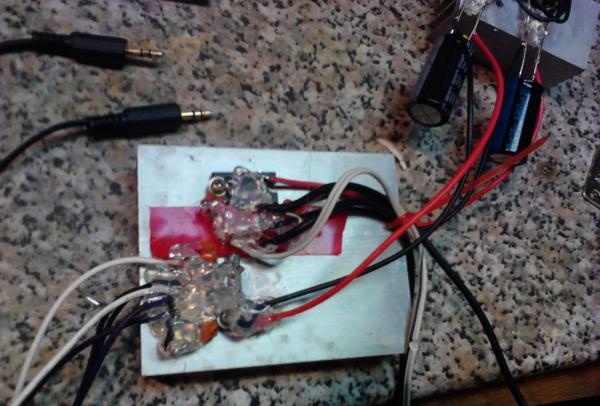
In fact, the amplifier as such is ready i.e. It can already fully function. But I strongly doubt that someone will be ready to decorate their table with such a piece of iron. And so a case is needed, it all depends on your imagination, I just took the case from a broken drive.
To start, with the same hot glue, I fixed the plug from the disc tray and glued my LED.
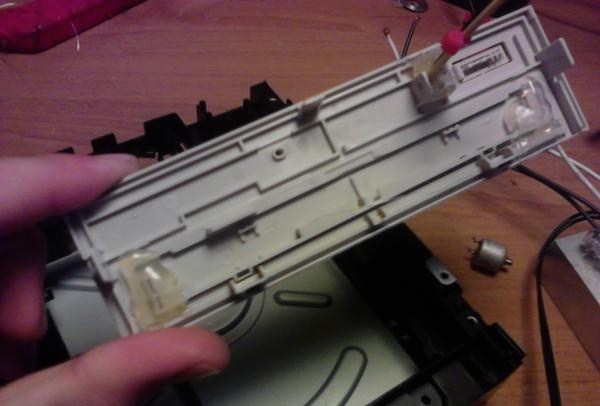
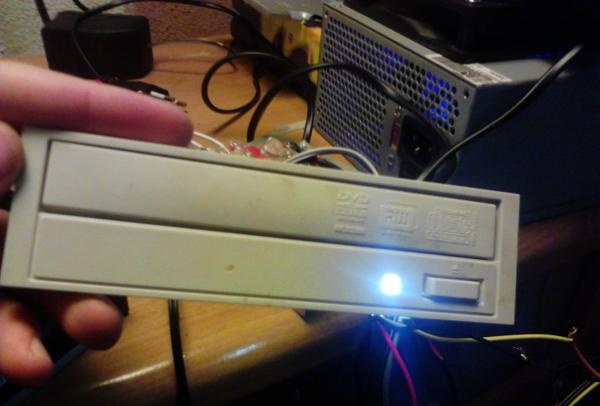
To connect the LED to a 12V power supply, it is necessary to consistently turn on a resistance of 500 ... 900 Ohm (depending on power)
Then we remove everything in the case and output the wires
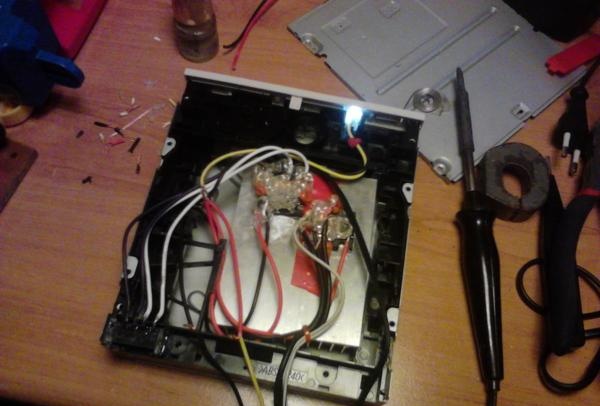
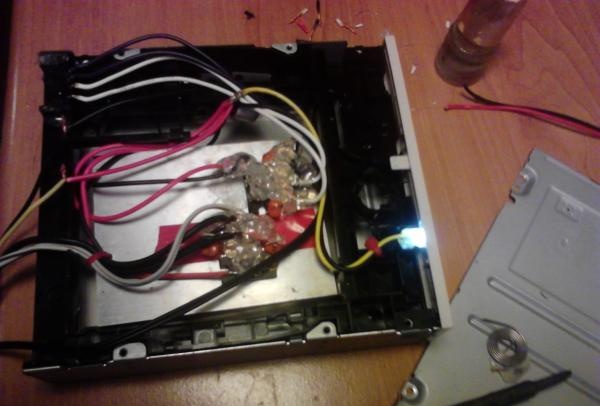
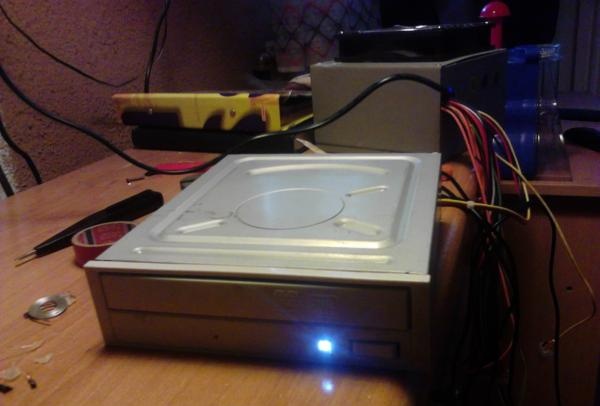
If you use a similar case, you can fix the chips directly on the metal case (inside) then the case will serve as a radiator. But I went the other way, I made ventilation holes and installed a not big fan.
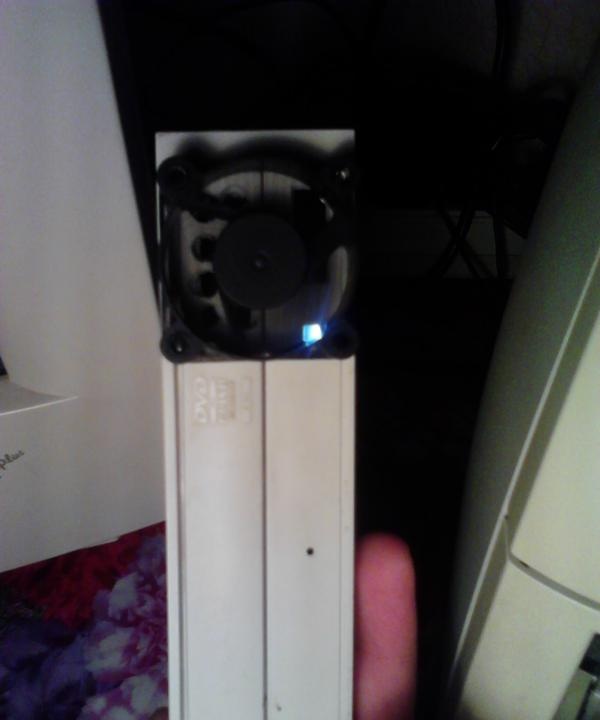
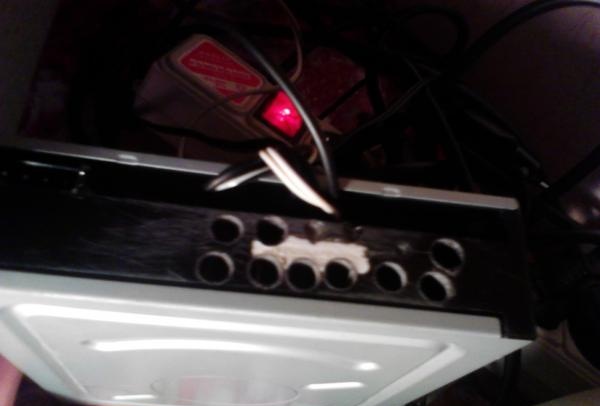
This is quite enough to prevent the amplifier from overheating.
The amplifier is ready. I did not set the volume and balance controls for the reason that now even the most low-cost audio cards are equipped with excellent software for these purposes.
If you touch the price, then everything is not very expensive
1. Chips TDA1558Q - 80 rubles. 1 PC.
2. Capacitors (0.22 microfarads 4 pcs. 0.1 microfarads 2 pcs.) 35 rub. for all
3. Capacitor 25V 6800uF 38 rub. 1 PC.
4. Thermal grease 40 rub.
5. The diode bridge 1000v 8A 20 rubles.
Everything was bought in specialized stores of the radio market.
Wishing to repeat good luck!
